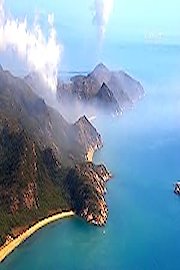In episode 8 of Coast Australia's third season, the team takes viewers on a journey across South Australia, starting in Adelaide and ending in Port Lincoln. The episode begins with presenter Neil Oliver exploring the bustling city of Adelaide, known for its thriving food scene and iconic architecture. He meets with local chefs and visits the Adelaide Central Market to sample some of the region's freshest produce.
The show then travels to the Fleurieu Peninsula, where presenter Tim Flannery takes a look at the region's unique geology and diverse wildlife. He visits the rugged coastline and meets with researchers who are working to protect endangered species such as the southern right whale.
Presenter Emma Johnston then heads to the Coffin Bay National Park, home to some of South Australia's most stunning beaches and marine life. She takes a dive in the crystal-clear waters to explore the underwater world and discovers an abundance of colorful fish and other sea creatures.
Back on land, presenter Brendan Moar travels to the Eyre Peninsula, famous for its seafood and natural beauty. He visits a local fishing community to discover the region's traditional fishing techniques and takes a boat ride to see firsthand how the world-renowned Coffin Bay oysters are harvested.
The episode ends in Port Lincoln, the seafood capital of Australia. Presenter Miriam Corowa takes a tour of the town's bustling fishing industry and learns about the challenges faced by local fishermen and women. She meets with a group of young entrepreneurs who are working to diversify the economy by developing new sustainable industries.
Throughout the episode, the Coast Australia team showcases the natural beauty of South Australia and highlights the importance of preserving and protecting the region's unique ecosystems. With stunning visuals and informative interviews, this episode is a must-watch for anyone interested in Australia's coastal regions and the diverse wildlife that inhabit them.
-
Genres
-
CastNeil OliverTim FlanneryAlice Garner
-
Channel
-
First AiredFebruary 27, 2017
-
Runtime49 min
-
LanguageEnglish

-
 Watch Unlimited Prime Video TV Shows
Watch Unlimited Prime Video TV Shows
-
 Anytime, Anywhere
Anytime, Anywhere
-
 Ad-free Videos
Ad-free Videos


 Watch Unlimited Prime Video TV Shows
Watch Unlimited Prime Video TV Shows
 Anytime, Anywhere
Anytime, Anywhere
 Ad-free Videos
Ad-free Videos























